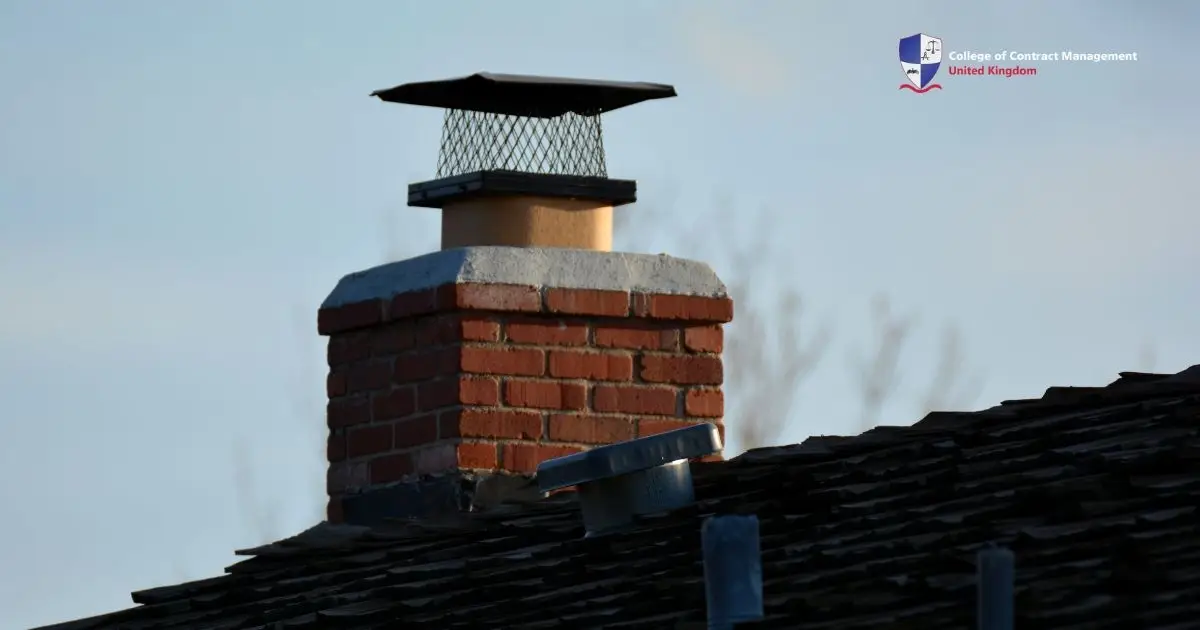A chimney is more than just a practical feature of your home–it’s a vital element that ensures comfort, safety, and energy efficiency. Whether you’re building a new house, upgrading an old fireplace, or designing a modern heating system, the right one can make all the difference. A well-chosen chimney not only ventilates smoke and gases but also improves the aesthetics of your living space.
So here’s everything you need to know about chimneys, from understanding their purpose and types to learning about maintenance and installation.
What is a chimney, and why is it important?
A chimney is a vertical structure designed to carry smoke, heat, and gasses away from a fireplace, stove, or furnace in the outside atmosphere. It ensures proper ventilation, protecting your home and its occupants from harmful substances such as carbon monoxide. With an improperly-functioning one, the safety and comfort of your home can be compromised.
Chimneys also serve a decorative purpose, adding character and charm to your property. Whether you prefer the classic look of brick chimneys or the sleek design of a metal one, choosing the right one can complement your architecture. Their dual role in function and style makes them an essential consideration for any homeowner or builder.
Choosing the perfect chimney
Choosing the right one requires careful consideration of several factors. These factors include your heating system, home style, and also personal preference. Making the right choice ensures that your chimney will be both efficient and visually appealing. Listed below are important aspects to look out for in selecting the right one for your home.
1. Match your heating system
- A wood-burning fireplace needs one that can handle high temperatures and also creosote buildup.
- Gas fireplaces require specific flues designed to vent gasses safely.
- For multi-fuel stoves, a flexible chimney system may be necessary to cater to varying fuel types.
2. Blend with your home architecture
- For traditional homes, masonry chimneys made from either brick or stone are a timeless choice.
- Contemporary homes often benefit from prefabricated or metal chimneys, which offer a modern aesthetic.
By considering these aspects, you can select one that not only performs well but also enhances your home’s overall appeal.
Types of Chimneys
Understanding the different types of chimneys available is crucial when planning your home project. Some chimneys are better suited for modern homes, while others are ideal for homes with limited space. To help you select the right one, the following are the types of chimneys with their strengths and specific uses. Choose the chimney that meets your needs.
1. Masonry chimneys
- Constructed from bricks or stones and built on-site
- Durable and able to withstand high temperatures
- Ideal for traditional fireplaces and wood-burning stoves
2. Metal chimneys
- Made from lightweight materials such as stainless steel or galvanised metal
- Easy to install and maintain
- Suitable for modern homes and either gas or oil heating systems
3. Prefabricated chimneys
- Factory-built units designed for quick installation
- This type of chimney is available in various styles to suit different home designs
- Cost-effective and versatile
4. Flue-less chimneys
- Used with certain gas appliances that don’t produce large amounts of smoke
- Compact and ideal for homes with limited space
- Requires proper ventilation in the room
Benefits of Having the Right Chimney
Investing in the right one offers many advantages for your home. It’s not just about the functionality. A good chimney contributes not only to your home’s efficiency and safety but also to its aesthetics. To explain it better, here are the benefits brought by having the perfect one for your home.
- Enhanced Safety
- Properly installed chimneys prevent harmful gases from entering your living space.
- They lessen fire risks by venting smoke and embers effectively.
- Improved Energy Efficiency
- Modern chimneys are designed to retain heat, reducing energy waste.
- Paired with an energy-efficient stove, they can lower your heating bills.
- Aesthetic Value
- Chimneys add a distinctive character to your home’s exterior.
- They can also be customised to match your style, from rustic brick to sleek metal designs.
Proper maintenance of your chimney
Maintaining chimneys is essential to ensure it continues to function both efficiently and safely. Neglecting this can lead to serious issues. Blockages, structural damage, and fire hazards may all pose a heavy danger to the health and safety of homeowners. In order to avoid these conditions, it’s important to follow these:
- Regular Inspections: The first thing to remember, have it inspected annually by a certified professional. This will then help identify any cracks, leaks, or creosote build-up that could pose a safety risk.
- Professional Cleaning: Following that, hire a chimney sweep to remove soot, creosote, and debris that accumulate over time. This prevents blockages and also reduces the risk of fires from chimneys.
- Timely Repairs: Address any structural damage, such as cracked bricks or a damaged flue liner, as soon as possible to maintain the integrity of the chimneys.
Learning about how to maintain chimneys through courses at the College of Contract Management can give you the skills needed to keep yours in top condition.
How chimneys are used in home projects
Chimneys are not limited to traditional fireplaces. They can also be integrated into various home projects, ranging from heating systems to decorative features. Being aware of how to use them effectively can elevate not only the functionality but also the overall design of your home. Here are some ways you can use one in your home project:
- Fireplaces and Stoves
- Create a cosy and inviting atmosphere in your living room.
- Pair with the right chimney for optimal performance and safety.
- Outdoor Features
- Install chimneys in outdoor kitchens or fire pits for enhanced ventilation.
- Adds a stylish touch to your garden or patio area.
- Architectural Accents
- Chimneys can be a focal point in your home’s design.
- Choose unique materials or shapes to make a statement.
By exploring these options, you can find innovative ways to incorporate chimneys into your home improvement projects.
Health and Safety in Chimney Construction
Safety is a top priority when working with chimneys, whether you’re installing one or performing maintenance. Improper handling can lead to hazards such as carbon monoxide poisoning, chimney fires, or structural collapses.
To ensure safety:
- Follow local building codes and regulations.
- Use high-quality materials for installation and repairs.
- Always hire certified experts for complex projects.
Courses at the College of Contract Management provide in-depth training on health and safety in construction, helping you approach chimney-related tasks with confidence and expertise.
Learning from the College of Contract Management
If you want to expand your construction skills and knowledge, the College of Contract Management is an excellent choice. They offer comprehensive courses covering all construction aspects, which also include chimney installation and maintenance. Their courses are designed to provide practical knowledge that can be applied directly to your projects. Key areas of learning include:
- Project Management: Gain skills to oversee home improvement projects effectively.
- Material Selection: Find out which chimney type is best suited to your needs.
- Health and Safety: Learn how to handle equipment and materials safely.
By joining the College, you’ll gain access to expert guidance and practical training that will help you achieve your goals. Whether you’re interested in chimney construction or broader construction management, their programmes are designed to set you up for success.
Final Thoughts
The College of Contract Management stands out for its industry-focused approach and high-quality instruction. Hence, by enrolling in their courses, you’ll gain valuable insights into the construction world, including how to handle projects involving chimneys.
With their support, you’ll develop both the confidence and expertise to tackle any home improvement project. Take the first step towards achieving your construction goals by joining the College today. It’s an investment in your future that you won’t regret.




